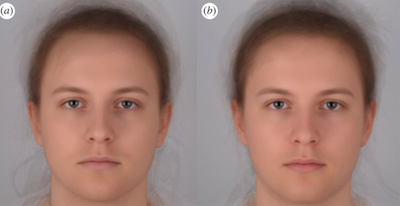Alexsson et al. do a study suggesting that you should look first for droopy eyelids and corners of the mouth, then also check for pale skin and lips, how puffy their faces look, eye redness, and tiredness. Here is their abstract:
Detection and avoidance of sick individuals have been proposed as essential components in a behavioural defence against disease, limiting the risk of contamination. However, almost no knowledge exists on whether humans can detect sick individuals, and if so by what cues. Here, we demonstrate that untrained people can identify sick individuals above chance level by looking at facial photos taken 2 h after injection with a bacterial stimulus inducing an immune response (2.0 ng kg−1 lipopolysaccharide) or placebo, the global sensitivity index being d′ = 0.405. Signal detection analysis (receiver operating characteristic curve area) showed an area of 0.62 (95% confidence intervals 0.60–0.63). Acutely sick people were rated by naive observers as having paler lips and skin, a more swollen face, droopier corners of the mouth, more hanging eyelids, redder eyes, and less glossy and patchy skin, as well as appearing more tired. Our findings suggest that facial cues associated with the skin, mouth and eyes can aid in the detection of acutely sick and potentially contagious people.

Figure - Averaged images of 16 individuals (eight women) photographed twice in a cross-over design, during experimentally induced (a) acute sickness and (b) placebo. Images made by Audrey Henderson, MSc, St Andrews University, using Psychomorph. Here, 184 facial landmarks were placed on each image before composites displaying the average shape, color and texture were created


